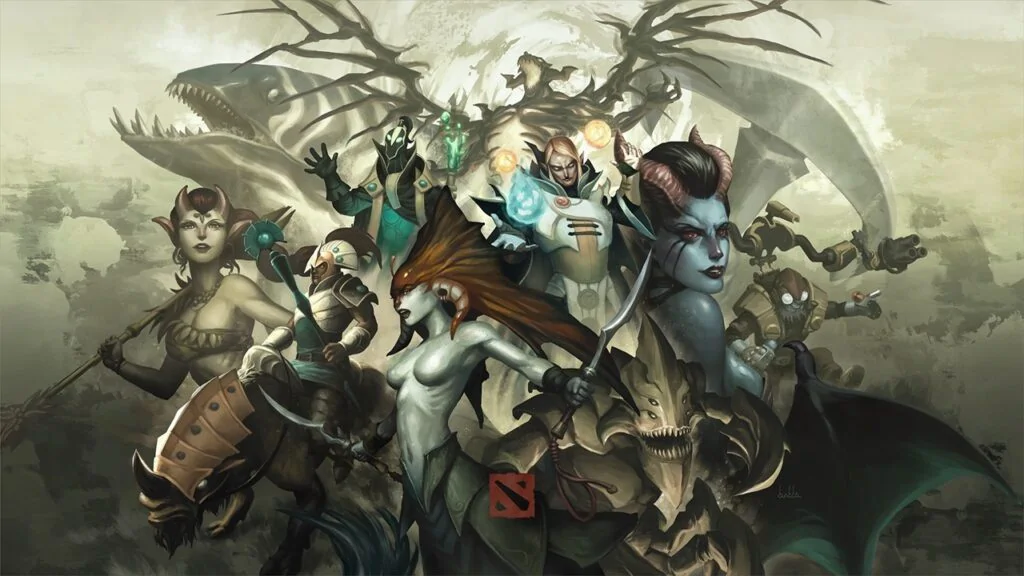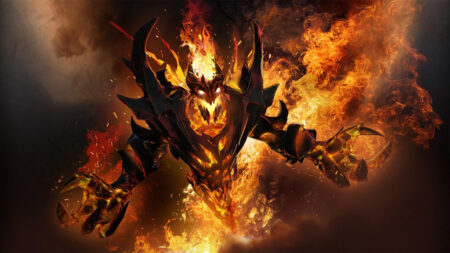Shadow Fiend — the quintessential midlaner — surprised many when it became a viable first-phase pick and ban throughout the TI11 Last Chance Qualifier and group stage.
It was perhaps equally surprising to see the hero suffer a precipitous drop at The International 11 Main Event. One win, nine losses — a 10 percent win rate, the lowest of any hero played more than five times.
How did Shadow Fiend drop off so much at the TI11 playoffs?
Shadow Fiend went from a 60.54 percent win rate in the LCQ to 54.93 percent in the group stage — still respectable, considering it was contested in more than 80 percent of drafts. Heading into the playoffs, it felt like the hero was not only primed to stay, but continue to dominate.
The first inkling that something was wrong was the first round of the upper bracket matches. Both Evil Geniuses and Team Liquid trusted in the hero, first-phase picking it in four separate matches.
Before heading into their respective series against Thunder Awaken and Team Aster, EG’s Artour “Arteezy” Babaev was 7-0 with the hero in the groups, while Liquid’s Michael “miCKe” Vu was 9-0 through both the LCQ and groups.
Four losses and two teams knocked down to the lower bracket in clean 2-0 series later, it was looking dire for first-pick Shadow Fiend.
- Exclusive: N0tail says TI prize money didn’t change his life
- TI11’s merch collection has everything a Dota fan will want, including a pajama set
The glassiest of cannons

While many heroes are reliant on Black King Bar, Shadow Fiend is especially so. The hero’s entire kit revolves around hitting fast and hard, bursting somebody down with Shadowrazes or immense right-click damage.
When that fails, he’s a hero that provides no sustainability by himself, requiring heavily on items or allies to save him. Without spell immunity, it’s nearly impossible for him to stand his ground, leading to a limited window of effectiveness that eventually dwindles to six seconds.
Meanwhile, compare him to a hero like Sniper. Sniper’s uber-long range helps him to skirt the edges of the fight, while Shrapnel is an AOE denial spell that gives vision and slows potential jumpers. Headshot can also push back heroes eager to pounce on him, and he even has a Shard that lets him disengage freely from fights.
Or Leshrac, who buys Bloodstone. That’s it, that’s the analysis.
The item’s active, on a 30-second cooldown, provides mana and spell lifesteal to Leshrac, who uses the mana to deal more damage and get more spell lifesteal, which gets more mana and — you get the idea, creating a perpetual motion machine that hurts like hell.
His sole spell that can be considered somewhat defensive — Requiem of Souls — requires almost two whole seconds to cast. It’s almost impossible to get off without spell immunity, which means that the time you should be spending hitting is now spent channeling an unreliable spell.
Can Shadow Fiend still put in work during the Finals?

It’s not quite time to entirely discount the hero yet.
Yes, the hero has a meager 10 percent win rate at the Main Event. That’s mostly because the top teams were able to account for Shadow Fiend’s weakness during the draft itself when it was such a priority pick. Now that the hero has rapidly fallen out of popularity in a matter of days, there’s a potential for surprise here.
Marci and SF was the most popular opening for several teams thanks to its versatility in lane. But perhaps a more save or push-oriented support instead of an offensive initiator like Marci can help the hero snowball completely. Something like Vengeful Spirit, Abaddon, or Lich could work here — likely sacrificing some laning prowess, but SF brings oodles by himself.
The hero, especially when played from mid, will benefit from expedited experience and gold gain. It’s still difficult to lose a lane on this hero due to Shadowrazes’ stacking damage and debuffs. When paired with an aggressive physical pushing core like Luna, Lycan, and Visage, an SF could still put in a shift as part of an extremely high-tempo lineup that aims to finish the game by 30 minutes or so.
It’ll definitely require planning. This sort of strategy likely requires leveraging a high duration Black King Bar on Shadow Fiend, and striving to win teamfights with overwhelming gold advantage rather than big spells.
It’s obviously risky, but the meta can change at the drop of a hat. With other heroes like Leshrac, Enigma, and Broodmother now taking the spotlight, it’s possible that a Shadow Fiend last pick could catch a team out by surprise — and any win is crucial in the Finals.
READ MORE: Over 920,000 Dota 2 players logged in to collect their TI11 Swag Bag goodies

